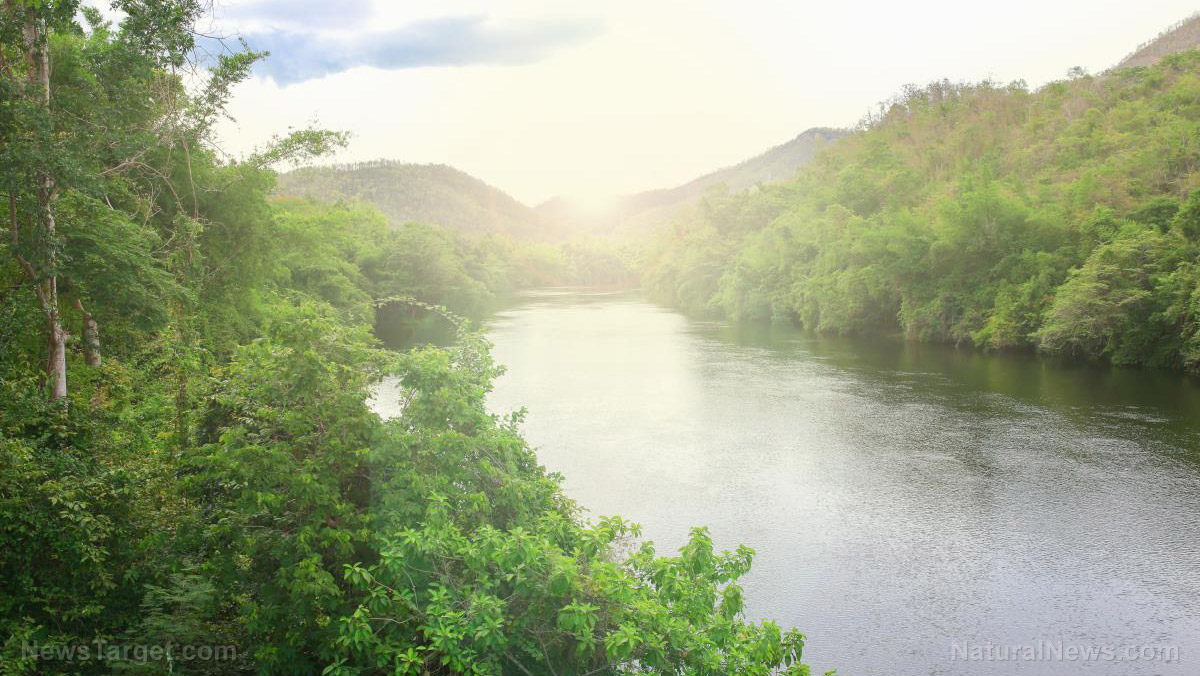Past fire control efforts have interfered with the natural ecosystem of forests, increasing the risk and intensity of wildfires
04/17/2019 / By Lance D Johnson

In recent years, large raging wildfires have increased in quantity and severity, engulfing the western United States. The year 2017 is on pace to be the most catastrophic year yet for wildfires. In Montana, more than 980,000 acres have been lost, as raging fires burn out forest canopies and destroy pristine areas. More than 578,000 acres have burned up in Oregon, more than 422,000 acres have been consumed in California, and nearly 200,000 have been destroyed in Washington. At the height of this year’s chaos, 76 large fires were burning across nine states, wiping out more than 500 homes and 32 businesses. What is to blame for such widespread chaos?
A team of researchers at the University of New Mexico set out to understand the cause and effect scenarios that are exacerbating wildfires in the West. Ironically, one of the biggest factors causing stronger wildfires today is many years’ worth of undiscerning and excessive fire control and suppression efforts.
No one wants to see fire blazing free in the forest, so every effort is made to contain the flames. However, small fires are a natural part of the ecosystem and should be left alone. These small fires clear out dry brush throughout the forests. The more mankind interferes to stop these cyclical, necessary fires, the more we create the conditions that feed much larger forest fires.
No one wants to see industry cutting down forest trees, so environmental protection efforts are put in place to “save the trees.” However, by not properly logging the forests, wildfires have plenty of firewood to build a stronger, all-consuming blaze in the future. Man’s attempt to control the forest and protect the environment has backfired, giving way to large fires that take advantage of dry climate conditions, thickly-wooded forests with heavy brush.
Sponsored solution from the Health Ranger Store: Lab-verified Nascent Iodine solution is a dietary supplement that provides your body with supplemental iodine to help protect your thyroid during radiation exposure. Nuclear accidents such as Fukushima (or nuclear war) can expose your body to radioactive iodine-131, a dangerous radioisotope. Pre-loading your system with stable iodine occupies the iodine receptor sites on your organs, causing your body to naturally expel radioactive iodine you may have been exposed to through air, food, water or milk products. This defensive strategy is recommended by nearly all health authorities, worldwide, including the Nuclear Regulatory Commission. Discover more at this link.
Dan Krofcheck, a post-doctoral fellow in UNM’s Department of Biology, says:
For a long time, there’s been this stigma that fire in the landscape is a bad thing. It makes sense, because fire is a destructive process. But, it’s also an integral part of how these ecosystems evolved and we kind of shut that down through heavy fire suppression activity. The result is that fuel that would have been consumed by frequent fire, builds up and accumulates. Subsequently, when you finally have fire move through an area, after it’s been suppressed for 30, 50, 100 years, you have these massive fires that no longer just consume the understory but they’re actually torching crowns and moving through the tree canopy.
Krofcheck’s team, along with the USDA Forest Service, looked for ways in which forest management can clear underbrush to lessen the contagious nature of forest fires. They conducted forecast simulations using projected climate data taken from the Dinkey Creek Collaborative Landscape Forest Restoration Project area in California’s Sierra Nevada Mountain Range. In one test, they thinned the entire area. In a second test, they cleared two-thirds less underbrush than the first test, choosing the most at-risk areas for wildfires. After examining over a thousand simulations, they found that strategic clearing of underbrush from high risk areas reduced fire severity up to 60 percent. “Even though we thinned about two-thirds less of the forest, we saw the exact same treatment outcomes,” said Krofcheck.
This is good news, because thinning an entire forest is unrealistic and expensive. “This research and way of thinking about optimally using your resources, in terms of where you thin, could go a long way in helping these organizations use their dollars most efficiently to achieve their desired outcomes, which is less severe fires,” said UNM Associate Professor Matthew Hurteau.
By examining and pinpointing the best places to thin the underbrush, future forest management teams can help prevent deadly forest fires. Healthy logging of the forest is also an integral part of forest management. Discerning when small burns are an appropriate part of the natural ecosystem burn-off is essential to long term prevention of catastrophic forest fires.
Sources include:
Tagged Under: Ecology, ecosystem, environment, forest management, forests, human interference, logging, Mother Nature, natural disaster, underbrush, wildfires
RECENT NEWS & ARTICLES
COPYRIGHT © 2017 COLLAPSE.NEWS
All content posted on this site is protected under Free Speech. Collapse.news is not responsible for content written by contributing authors. The information on this site is provided for educational and entertainment purposes only. It is not intended as a substitute for professional advice of any kind. Collapse.news assumes no responsibility for the use or misuse of this material. All trademarks, registered trademarks and service marks mentioned on this site are the property of their respective owners.




















